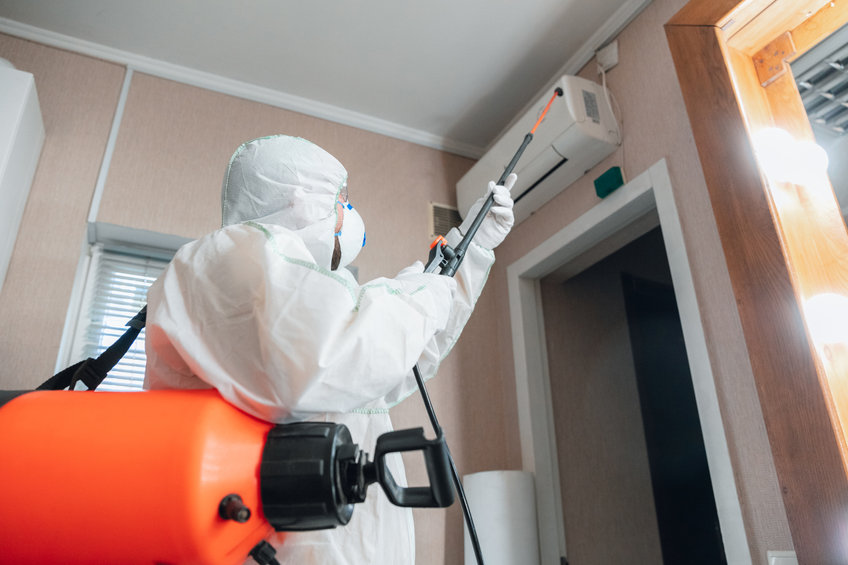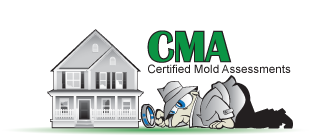Overview
By the time most people realize mold is a problem, it is a serious concern and an expensive one. Unfortunately, the invisible enemy of mold often presents many Catch 22’s. Sometimes the area that needs to be remediated is in an unreachable area. In many cases, the price tag for complete remediation is too much for the homeowners.
In recent years, fogging has come on the scene as a popular and inexpensive way for remediation companies to “rid” homes of mold. Our perception is that many companies are not being completely transparent about the correct use of fogging and what proper remediation entails. Our concern is that people already facing an expensive, time-consuming, and sickness-causing event are vulnerable to misinformation and unethical business practices. In this spirit, we have created this article for you to hopefully clear up any grey area about fogging’s effectiveness against insidious mold issues.

What is Fogging?
Fogging is the act of taking a substance such as concrobium, EC3, or Benefect Decon 30 and using a device to turn it from a liquid to a mist. This device is known as a fogger. You are probably aware of another example of another industry that uses fogging: pest control.
Two kinds of fogging exist: dry fogging and wet fogging. The difference between the two is simple. It comes down to droplet size. If the fog creates droplets that are less than 15 microns per droplet, it is considered dry fogging. Larger droplets are considered wet fogging. Both dry and wet fogging are services that mold professionals advertise.
What is Necessary for Proper Remediation?
Each case of water intrusion and mold growth is unique. The remediation protocol given can be widely different for varying situations. This article is too short to go into extreme detail or be used as a guide for remediation. However, we will point out a few of the critical components of successful remediation:
- Treating the root cause of the water intrusion issue – Wherever the leak or humidity issue originates is vital to identify. In some cases, there is more than one issue. The first step in any remediation protocol is to remove the water source and fix the leak, humidity issue, or source of water intrusion.
- Seal off any areas, protect HVAC’s and ductwork – this prevents cross-contamination and can prevent a minor issue from becoming a big issue.
- Remove compromised materials – Since mycotoxins released by mold make people sick, removal of any wet, moldy, or discolored materials is imperative, especially if a person with CIRS will reside in the home.
- Treat the area with a solvent that is safe for the person who will live there. In some cases, this is hydrogen peroxide or Benefect Decon 30.
- HEPA vacuum the whole space affected by mold or water – in other words, address all surface areas.
- Treat the air quality – Using air scrubbers and air purifiers and fogging in some cases to make sure the safe is air to breathe. This is often a time-consuming process.
- Re-test surfaces and air.
What is an Appropriate Use for Fogging?
As you can see in the preceding list, there are seven separate steps involved in the remediation process. Of those seven steps, fogging is a remediation tool in only one of them: Step #6.
Fogging can be a valuable tool to improve air quality. It does this by attaching to mold spores and/or mycotoxins and giving them weight. They then fall to the floor. What that looks like is a bunch of tiny spitballs. Then, the fogging professional will HEPA vacuum to get rid of what dropped to the floor.
In short, fogging is an added layer of protection. At Certified Mold Assessments, we recommend fogging often to our clients who deal with CIRS. For someone who is extra sensitive, fogging is an additional step that can be taken to help minimize the toxic load of mycotoxins.
Also, because a fogger and EC3 are a relatively minor expense, it is something a homeowner can invest in and use to periodically fog and lower levels of any cross-contamination after a home has been remediated. This goal is to minimize exposure to mold spores and mycotoxins, not to fix a significant whole-house mold issue.
Where Consumers are Being Mislead
Sadly, many remediation professionals prey upon the vulnerability of those dealing with a complex mold issue. Of course, a mold infestation can be expensive and incredibly damaging to homes. It is overwhelming for homeowners to contemplate ripping out materials that may on the outside not appear to be an issue when the mold is lurking behind drywall.
Unfortunately, too many companies are now recommending fogging as an excellent alternative to complete remediation. They will claim that it can be as effective as removing compromised materials and will use fear-based tactics to sell their service as a silver bullet.
Yes, fog can reach hard-to-reach areas, but it can’t do anything more than improve air quality for a short time. It cannot kill or get rid of mold on porous surfaces, it cannot sterilize unseen areas, it is not a long-term fix, and it certainly cannot replace proper remediation.
The original issue will return days or weeks after fogging if the water intrusion is not corrected and the mold-compromised materials are not removed. At this point, homeowners may have spent big money only to find themselves back at square one.
Further Helpful Resources on Fogging
Mold Finders Radio is a great resource for remediation. You can find them here.
For more tips, or if you are interested in learning how to face life’s challenges with CIRS, please follow us on Instagram and Facebook. Also, if you have any questions or comments, feel free to leave them in the comments below or on our social media.
And of course, please book your inspection today! While we are always sorry to hear of anyone who has a mold issue, we do look forward to sharing our experience, insight, and resources with you!
